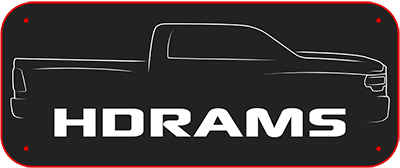Regeneration is the process that the trucks emission system uses in order to clear out trapped soot in the diesel particulate filter (DPF).
As you drive the truck, the soot gets trapped in that filter. The soot is constantly trapped inside it, and then systematically removed through a process called regeneration. There are three types of DPF regeneration cycles that can occur in your truck. These are “Active Regeneration (aka automatic regeneration)”, “Passive Regeneration”, and “Forced Regeneration (aka stationary desoot or parked regeneration”
Active regeneration cycles occur in one of two ways. Either based on the current soot load in your DPF or every 24-25 hours of engine operation. In the soot-load based mode, the cycle will automatically initiate when the % of soot in the DPF reaches a pre-programmed threshold. In our trucks, that threshold is about 50% on the in-dash DPF gauge. Once it starts, it will continue until the % reaches zero, or the operator does something to inhibit the cycle (putting the truck in park or shutting it off) If the cycle is inhibited by the operator, it will pick back up when the truck begins to move again and conditions in the engine and emissions systems are favorable for regeneration to continue. In the timed mode, the same cycle will initiate every 24-25 hours of engine operation regardless of the % soot load in the DPF. Active regeneration initiated either at the 50% soot load threshold, OR at the 24 hour engine timer. Whichever scenario happens first. The timer always resets when a cycle is completed, regardless of which type of initiation started it. In both the scheduled and threshold based active regeneration cycles, diesel fuel is being injected into the exhaust stream to raise the temperature in the DPF high enough to burn away the accumulated soot. You should do your best to allow this cycle to continue once started, and preferably during highway driving. When the truck is in an active regeneration, if you scroll to the DPF gauge in the dash, you’ll see a message that says “automatic exhaust system regeneration in progress”.
Passive regeneration is another way the DPF is cleared of soot. In this type of regeneration, the truck is generating high enough exhaust temperature that the temperature inside the DPF is raised to a point where soot will naturally begin to burn away. Passive regeneration happens naturally while you drive, without any additional fuel added to the exhaust steam. The only requirement is that the truck is working hard enough to generate high enough EGT’s to maintain the reaction in the DPF. The DPF has to remain at around 600-660°F or higher in order for passive regeneration to continue. Passive regeneration usually takes longer to clean the DPF out especially when the trucks engine is operating under a reduced load (unloaded or not towing) This type of regeneration typically only happens at highway speed or while towing continuously. There is no message on the dash when this type of regeneration is occurring. The only way you’ll know it’s happening is a visible reduction in the % soot load gauge on the dash screen.
Forced regeneration is the third type of regen cycle. It is similar in function to an active regeneration cycle as mentioned before. The only difference is, a forced regeneration occurs while the truck is sitting in park. It must be initiated by either a service scan tool, or in the case of the chassis cabs, by means of an option on the display. These are often referred to as “stationary de-soot” cycles. They are extremely effective at cleaning the DPF out because the truck has full control of the engine RPM and fuel dosing, and can thus increase and hold the temperature in the DPF to a very high level for a continuous length of time. These types of regeneration cycles are only needed if the other two types of cycles are not regularly allowed to occur.
